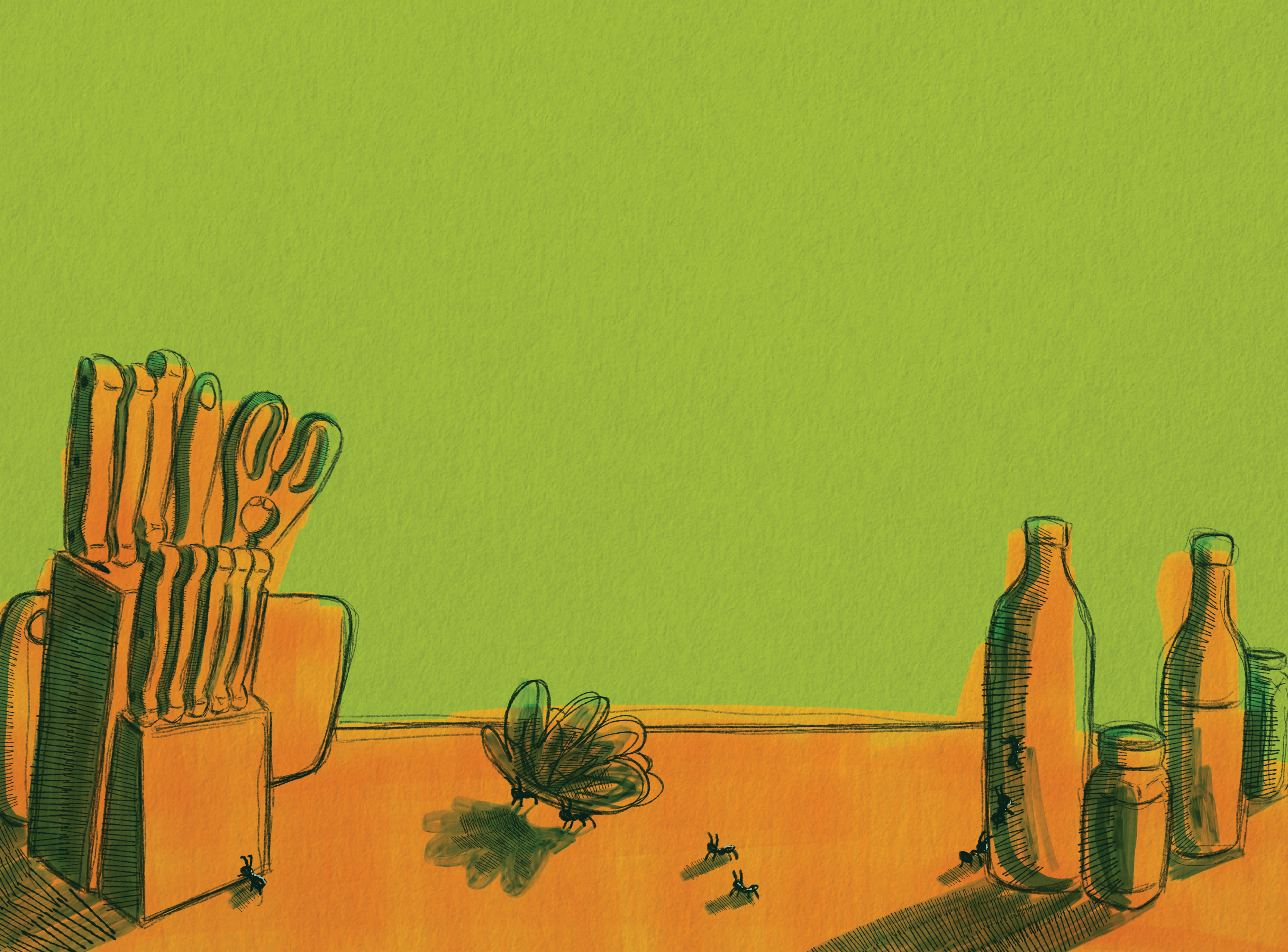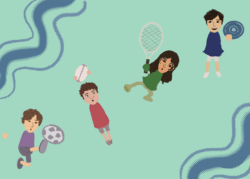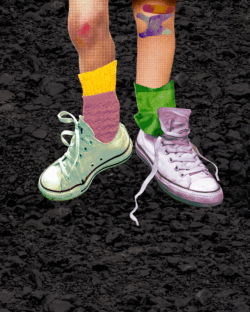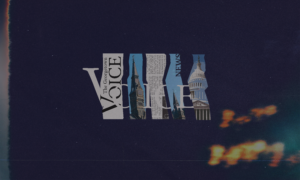It’s the dead of night. You are so very thirsty. You peel yourself out from under your warm covers and tiptoe into the cold, dark hallway. Squinting down the stairs, you find yourself drawn to the glow of the microwave across the kitchen. Red and softly flickering, its clock reads 1 a.m. As you open the fridge, the bright light escaping from the door awakens something at your feet. You look down and see a teeny, tiny ant.
The little creature scurries away—it knows it’s been discovered. It flees across cold, hard earth and ducks under a large, humming rock. It is safely sheltered from you, hidden away from the world. The ant is not just under your fridge; the ant is still outside.
From your perspective, the pest is unwelcome in your house. The ant is a visitor from the outdoors, one that is intrusive. But to the ant, your home is just a different (and perhaps stranger) part of their natural world.
And maybe the ant has the right idea. Maybe there really is no such thing as inside.
Despite our strict binary, the line between what is considered “inside” and “outside” is more arbitrary than we think. Is a shelter underneath a tree inside? Could a cave count as someone’s house? To many critters, humanity and the structures we build are equally a part of the natural world as any rocks or beds of grass.
We need to detach ourselves from the concepts of outside versus inside. In reality, everything is part of the outside world.
From decorating cave walls to building modern day skyscrapers, humans have always found ways to physically distinguish and separate themselves from nature. While some estrangement may be necessary to protect us from harmful weather and dangerous animals, the construction of “inside” has gone beyond protection. We have detached ourselves emotionally from our place in the natural ecosystem.
This idea of nature as something different from human society is misguided. Environmental historian William Cronon argues that as we make wilderness an “other” in an attempt to preserve it, we neglect our true purpose of existing within the natural world. According to Cronon, this perspective of the wilderness as an “other” stems from the Europeans who colonized Native American land. In our attempt to protect the outdoors, through laws and preserves, we create this idea that it is something we need to keep separate from humanity, when in reality we should think of humanity as part of the wilderness.
There’s a tendency for us to occupy the space around us rather than exist within it. The buildings we create exist because of the destruction of the land around it, instead of being created in conjunction with it. Our biggest energy source— fossil fuels—may exist as a product of our environment, but our use of them destroys the world we live in. Much like the pests we scorn in our homes, humans have encroached on the natural world in our own ways, including deforestation and pollution. Far too often we believe our human existence is superior to other living beings when, in reality, we are all united in the same ecosystem.
This is not an original idea. Hindus believe that the divine and the natural world are one, and that the natural world need not be protected, but rather honored. Their spirituality includes rituals like yoga to harmonize humans with nature and higher levels of the universe through mindful movements.
In Buddhist thought, there exists a mutual interdependence between all things—nothing can exist or be defined without the existence of everything else. They also explain this interconnectedness through karma, the idea that every action has an equal reaction from the universe. These ideas form the Buddhist environmental ethical belief that humans are responsible for the lives of other creatures and should be involved in what happens on Earth.
Yet, these perspectives of nature’s and humanity’s oneness are no longer a part of the greater societal narrative. Georgetown students may find it especially difficult to reimagine the world in this manner. When locked on Lau 5 for hours every day during the never-ending weeks of midterms, it’s hard to believe that there is an outside world at all, let alone that the library is part of it.
So, beyond being outside while inside of Lauinger, how does one reconnect with humanity’s natural side?
In all honesty, I don’t think there’s any wrong way to do this. Intentional movement and periods of thought are what originally made me ruminate over the ridiculousness of inside and outside as a strict binary. Becoming more in tune with my body and mind through yoga and meditation revealed how every part of myself works as one unit––a mirror for humanity’s role in the ecosystem. As I become more mindful of each breath I take with my every movement, I reconnect with how they exist as pieces of the puzzle of the universe. With this attitude, we can accept our small part in the greater flow of existence.
I do not want to call for the entire deconstruction of the idea of inside, or even the deconstruction of inside spaces entirely. I do, in fact, still swat at mosquitos. Yet, when it comes to the tiny ant in my kitchen, I can’t help but question the expected burst of outrage. So, on a campus of students always focused on their inside worlds, it might be helpful to just take a moment, look around, and breathe.





